COBS News archive
Rosetta Sets Sights on Destination Comet
March 31, 2014
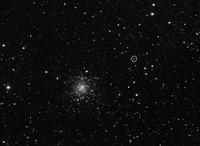
The Rosetta spacecraft has caught a first glimpse of its destination comet since waking up from deep-space hibernation on Jan. 20. The first images of comet 67P/Churyumov-Gerasimenko were taken on March 20 and 21 by the Optical, Spectroscopic and Infrared Remote Imaging System (OSIRIS) wide-angle camera and narrow-angle camera. Rosetta is an international mission spearheaded by the European Space Agency with support and instruments provided by NASA.
Hubble Sees Mars-Bound Comet Sprout Multiple Jets
March 27, 2014
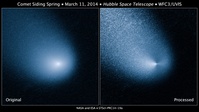
Hubble Witnesses Asteroid's Mysterious Disintegration
March 18, 2014
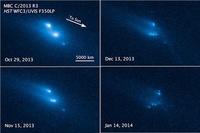
New Comet: C/2014 E2 (JACQUES)
March 14, 2014
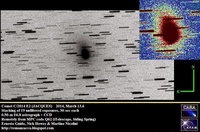
Rare form of nitrogen detected in comet ISON
March 12, 2014
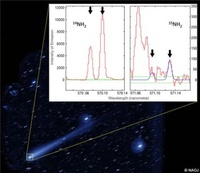
Astronomers observed the Comet ISON during its bright outburst in the middle of November 2013. Subaru Telescope's High Dispersion Spectrograph has detected two rare forms of nitrogen in the comet ISON. Their results support the hypothesis that there were two distinct reservoirs of nitrogen the massive, dense cloud ("solar nebula") from which our Solar System may have formed and evolved.
A good year to find a Comet
February 13, 2014
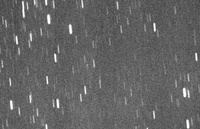
NASA Preparing for 2014 Comet Watch at Mars
January 31, 2014

NASA Instruments on European Comet Spacecraft Begin Countdown
January 25, 2014
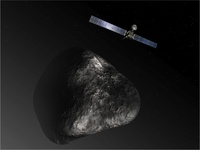
Rosetta: 'Sleeping Beauty' Wakes Up from Deep Space Hibernation
January 21, 2014
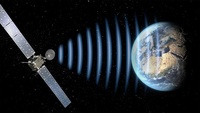
Rosetta: To Chase a Comet
January 17, 2014
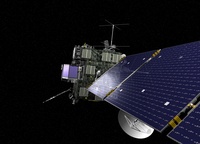
Comets are among the most beautiful and least understood nomads of the night sky. To date, half a dozen of these most heavenly of heavenly bodies have been visited by spacecraft in an attempt to unlock their secrets. All these missions have had one thing in common: the high-speed flyby. Like two ships passing in the night (or one ship and one icy dirtball), they screamed past each other at hyper velocity -- providing valuable insight, but fleeting glimpses, into the life of a comet. That is, until Rosetta.
'Standing On a Comet': Rosetta Mission Will Contribute to Space Weather Research
January 16, 2014
New Comet: C/2014 A4 (SONEAR)
January 16, 2014
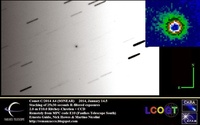
Cbet nr. 3783, issued on 2014, January 16, announces the discovery of an apparently asteroidal object (discovery magnitude ~18.1) by Cristovao Jacques, Eduardo Pimentel, and Joao Ribeiro de Barros on CCD images obtained on Jan. 12.0 UT with a 0.45-m f/2.9 reflector of the Southern Observatory for Near Earth Research (SONEAR) at Oliveira, Brazil.
Comet ISON Is Still Dead
December 21, 2013
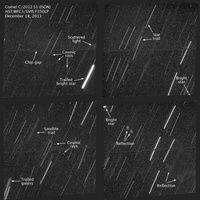
Fire Vs. Ice: The Science of ISON at Perihelion
December 16, 2013
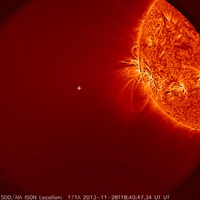
Intricacy of Comet Lovejoy's Tail Captured
December 08, 2013

NASA Investigating the Life of Comet ISON
December 02, 2013

After several days of fading, scientists continue to work to determine and to understand the fate of Comet ISON: Theres no doubt that the comet shrank in size considerably as it rounded the sun and theres no doubt that something made it out on the other side to shoot back into space. The question remains as to whether the bright spot seen moving away from the sun was simply debris, or whether a small nucleus of the original ball of ice was still there. Regardless, it is likely that it is now only dust.
SOHO Shows New Images of Comet ISON
November 28, 2013
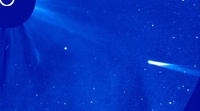
As Comet ISON heads toward its closest approach to the sun -- known as perihelion -- on Nov. 28, 2013, scientists have been watching through many observatories to see if the comet has already broken up under the intense heat and gravitational forces of the sun. The comet is too far away to discern how many pieces it is in, so instead researchers carefully measure how bright it is, which can be used to infer its current state.
Comet ISON vs. the Solar Storm
November 26, 2013
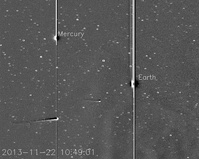
NASAs Solar Observing Fleet to Watch Comet ISONs Journey Around the Sun
November 25, 2013
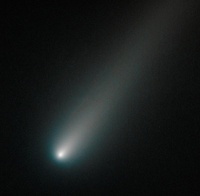
It began in the Oort cloud, almost a light year away. It has traveled for over a million years. It has almost reached the star that has pulled it steadily forward for so long. On Thanksgiving Day, Nov. 28, 2013, Comet ISON will finally sling shot around the sun. Here its inward journey through the solar system will end -- either because it will break up due to intense heat and gravity of the sun, or because, still intact, it speeds back away, never to return.
Anticipated STEREO observations of Comet ISON
November 23, 2013
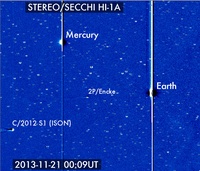
Comet C/2012 S1 was discovered in September 2012 by Russian astronomers Vitali Nevski and Artyom Novichonok using data from the International Scientific Optical Network (ISON). For that reason, it is also known as Comet ISON. This comet is on a close encounter with the Sun on November 28, 2013 (Thanksgiving day in the U.S.), when it will pass at a distance of only 2.7 solar radii from the center of the Sun.